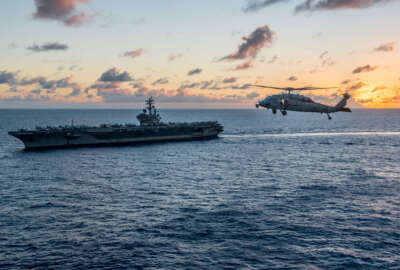
Milley joins ranks pleading for readiness over capacity
Army Chief of Staff Mark Milley joined the Army Secretary and the Navy in asking for readiness money before expanding end strength.
Army Chief of Staff Gen. Mark Milley is joining other high ranking officials in warning Congress and President-elect Donald Trump about spending any possible new military funds on increasing capacity.
Trump repeatedly called for a larger active duty Army force during the campaign and since his election. Trump expressed interest in increasing the force by at least 60,000 troops.
But Milley warned that his service has other, higher priorities before it can increase its end strength.
“Readiness will remain the number one priority,” Milley said during a Jan. 12 speech at an Associate of the United States Army event in Arlington, Virginia. “If we’ve got some significant increase in money we will continue to prioritize readiness. Having said that, we have got to get after modernization, so there’s going to be a balance between the two.”
Milley said modernization priorities were in air defense, aviation and electronic warfare.
How exactly a Trump administration would allocate extra funds is still unknown, but Trump signaled he was interested in increasing the defense budget by as much as $100 billion.
Armed Service Committee Chairmen Sen. John McCain (R-Ariz.) and Rep. Mac Thornberry (R-Texas) are also expected to propose an increased defense budget for 2018.
Milley warned that putting that money into force structure without addressing readiness could be detrimental to the service.
“If, for example, we did have additional people, it’s important that we get the money with the people because if we just get additional people or additional end strength, but we don’t have the money then that leads you down the road to a hollow force and we don’t want that,” Milley said. “If we do increase the people, the first thing we need to do is improve the manning levels in the existing organizations because our formations are under strength.”
Congress already authorized an increase in active duty Army strength to 480,000 in 2017. That could reverse the trend of downsizing the Army to 450,000 by 2018.
Milley’s remarks reflect those of Army Secretary Eric Fanning, who will leave office with the Obama administration.
In November 2016, Fanning took a jab at Congress’ plan to increase the size of the Army.
“A raw number doesn’t necessarily tell you what an army is and what capabilities an army brings to a fight. It’s very important that we think in terms of a balanced program. It’s not just people. It’s people that are trained and equipped. If we are asked to keep more force structure without an increase in the budget in some way then we have more people with less training and less equipment,’ Fanning said. “That could easily, quickly become a larger Army that’s less effective than the one we are trying to build now.”
The Big Picture
Milley and Fanning’s sentiments reflect a larger push for readiness from the services in the face of Trump’s penchant for capacity building.
Yesterday, Vice Chief of Naval Operations Adm. William Moran said the Navy wants its first extra dollar to go toward readiness.
“This is a long war we’ve been in, we’ve got emerging and reemerging threats that have all raised the stakes on making this long game even longer and we are not going to stay healthy if we don’t pay attention to our maintenance accounts,” Moran said during a Jan. 11 Surface Navy Symposium event in Arlington, Virginia. The “274 [ships], that 308 or that 350 is not going to be the same number at readiness funding levels that we have today.”
Moran said in his talks with the Trump transition team readiness came up more than any other topic, especially in the realm of ship maintenance and aviation maintenance.
That spending recommendation is in contrast to Trump’s push for a 350-ship Navy — the U.S. currently has 274.
That isn’t to say the services don’t want extra capacity, it’s just a matter of prioritization.
“We do want to be bigger. We at the Army think that our capacity needs to increase and … we think our capability, the technical capabilities of our systems and formations needs to increase and we think our readiness needs to increase,” Milley said. “We fully understand that’s an expensive proposition for the United States Army.”
The Navy feels the same way. Moran noted the Navy did several studies based on the needs of the combatant commanders and found a realistic number for meeting those demands was 350 ships.
Moran noted the Navy said it needed 316 ships in 2001, but is still operating at 274.
“I’m an English major, but I can do the math on that one pretty quickly and we’ve got 90,000 fewer sailors in the fleet than we did on 9/11. All that adds up to higher stress, deferred maintenance and higher costs,” Moran said.
The 2016 update to the Navy Force Structure Assessment, sent to Congress last week, asserts the service needs a fleet of 355 ships in order to adequately perform its missions.
The Navy said in a statement that the new force structure assessment “was not constrained by Budget Control Act funding levels” but insisted that “if funded, this plan is executable, as each ship class called for in the FSA has an active shipbuilding line already up and running.”
Copyright © 2025 Federal News Network. All rights reserved. This website is not intended for users located within the European Economic Area.
Scott Maucione is a defense reporter for Federal News Network and reports on human capital, workforce and the Defense Department at-large.
Follow @smaucioneWFED



